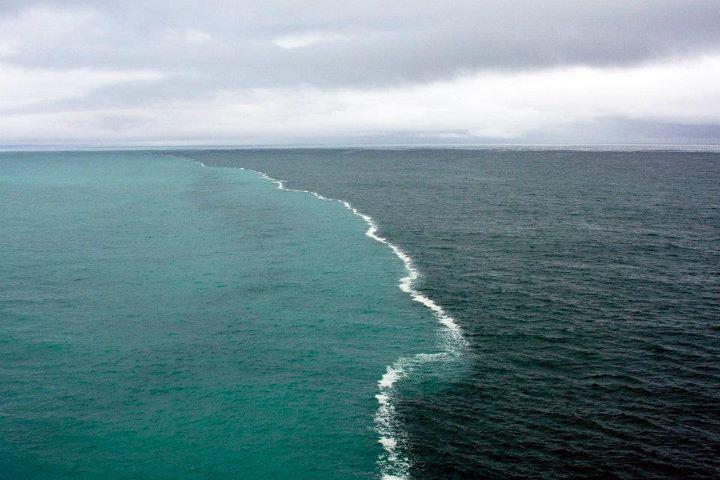You THINK this is the meeting point of two oceans? YOU ARE WRONG!
In light of the picture posted at flickr Merging Oceans - Kent Smith .
A photo from the Gulf of Alaska that has been making the rounds on the Internet throughout the previous couple of years - however especially lately - demonstrates an unusual regular marvel that happens when substantial, dregs loaded water from icy valleys and streams fills the untamed sea. There in the inlet, the two sorts of water keep running into each other, a light, practically electric blue converging with a darker slate-blue. !
Casually named "where two seas meet," the clarification for the photograph is a basic one, however there are numerous misguided judgments about it, including that appealing title. Specifically on prominent connection sharing site Reddit, where clients have on different events wrongly ascribed the photograph's area as "Where the Baltic and North Sea meet"and the two sorts of water as being totally unequipped for consistently blending, rather interminably banging into each other like a limit on a guide.

You likewise may have seen a minor departure from the photograph including a similar wonder, taken by picture taker Kent Smith while on a July 2010 journey in the Gulf of Alaska. That photograph too has been flowing the web for quite a while, however the confusions about it appear to be less on account of Smith's clarification of the photograph on his Flickr page. That one has likewise been making the rounds on Reddit and web-based social networking for quite a long time, and had piled on more than 860,000 perspectives by mid 2013 on that one page alone, Smith said.
That unique photograph, in any case, begins from a 2007 research journey of oceanographers examining the part that iron plays in the Gulf of Alaska, and how that iron achieves certain zones in the northern Pacific.
Ken Bruland, educator of sea sciences at University of California-Santa Cruz, was on that voyage. Truth be told, he was the person who snapped the pic. He said the reason for the voyage was to look at how colossal vortexes - moderate moving streams - going into the several kilometers in distance across, whirl out from the Alaska drift into the Gulf of Alaska.
Those swirls frequently convey with them gigantic amounts of cold silt because of waterways like Alaska's 286-mile-long Copper River, prized for its salmon and beginning from the Copper Glacier far inland. It discharges out east of Prince William Sound, conveying with it all that overwhelming earth and residue. What's more, with that silt comes press.
"Icy mass waterways in the late spring resemble buzzsaws dissolving without end the mountains there," Bruland said. "Simultaneously, they lift up this material - they call it chilly flour - that can be done."
Once these frigid waterways empty out into the bigger waterway, they're grabbed by sea streams, moving east to west, and start to circle there. This is one of the essential strategies that iron - found in the dirt and dregs of the chilly overflow - is transported to press denied areas amidst the Gulf of Alaska.
Concerning that particular photograph, Bruland said that it demonstrates the crest of water spilling out from one of these dregs rich waterways and meeting with the general sea water. It's likewise a deception that these two sorts of water don't blend by any means, he said.
"They do in the end blend, yet you do run over these truly solid slopes at these particular minutes in time," he said. Such fringes are never static, he included, as they move around and vanish through and through, contingent upon the level of dregs and the impulses of the wate